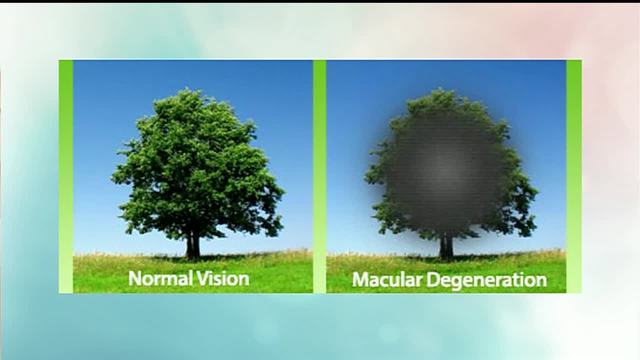The macula is a very small but very important part of the eye, located at the centre of the retina (the area at the back of the eye made up of light-sensitive tissue). It is responsible for providing most of our central vision, whereas the outer parts of the retina give us our peripheral vision. As we age, the macula can deteriorate, which is why this condition is commonly known as age-related macular degeneration, or AMD, although it’s not always due to the natural process of ageing. While it rarely leads to total blindness, AMD is the most frequent cause of severe vision loss in patients older than 60.
AMD usually takes one of two forms: dry and wet. Most patients have the “dry” form, which presents as yellow deposits forming in the macula. These deposits, called drusen, can grow in size and multiply in number until they begin to affect vision, making things appear dimmer or distorted, especially when reading. As the condition advances, the tissue made of photoreceptor cells can begin to thin, which can lead to blind spots in the central vision.
With the less common “wet” form of AMD, there is a build-up of fluid, due to the growth of abnormal blood vessels under the macula, which eventually can leak into the retina and create disruptions in normal vision: in addition to the blind spots and lessened central vision found with dry AMD, straight lines begin to look curved or wavy. Ultimately, the blood vessels and bleeding can cause scarring, which can lead to a permanent loss of parts of the central vision. Wet AMD accounts for only 10% of macular degeneration cases, but it causes most of the serious vision loss that can result from the condition. It’s also worth noting that dry AMD can lead to wet AMD.
As stated, ageing is not the only cause. There is thought to be a genetic component, as well as lifestyle-based risk factors include smoking, obesity, high blood pressure, and high cholesterol. Symptoms may take a while to become apparent: the first such sign is usually a blurred spot in the middle of your vision, which could grow bigger or darker as the condition advances. Those afflicted with the condition may also notice a loss of or change in colour perception.
Fortunately, AMD can be detected in a standard eye examination. Your doctor will be able to see if you have any drusen deposits. He or she may also test to see how well you can perceive straight lines; if they seem wavy or you can’t see them at all, this could be another sign of AMD. If AMD is suspected, you may have an angiography, a procedure in which you have an injection of dye in your arm. The dye is tracked until it reaches the blood vessels in the retina, which is then photographed to show any abnormal blood vessels or vessels that may be leaking.
There is not a cure for AMD, as such, but with early diagnosis, treatments are available that can slow its progression or prevent severe sight loss. Be sure to have regular eye examinations and speak with your doctor right away if you have noticed any changes in your vision.
This article is written on behalf of Moorfields Eye Hospital in UAE.
















